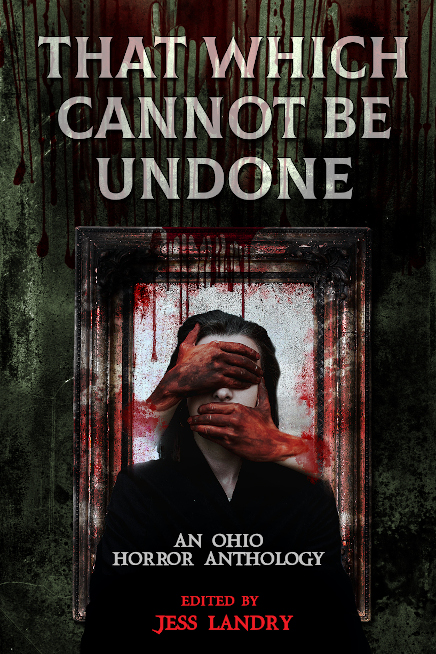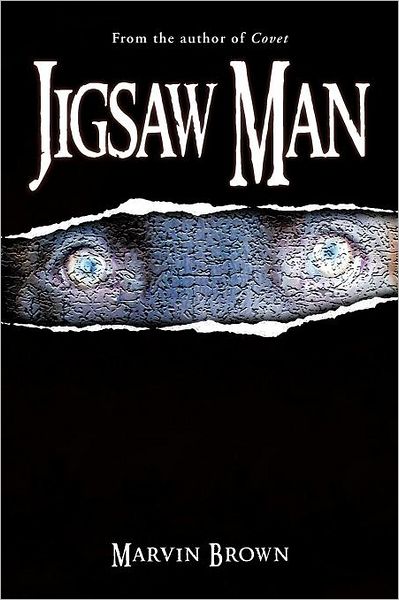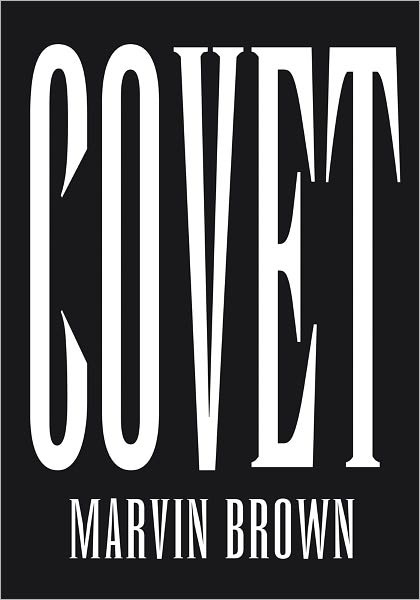| THE HOUSE THE LORD BUILT
Journalist Marvin Brown Releases New Book on the History of Akron, Ohio Church, The House the Lord Built
ATLANTA, GA, (September 15, 2015) – Award-winning journalist, Marvin Brown, releases a full-color history book of The House of the Lord in Akron, Ohio. The book, The House the Lord Built, honors the 40-year history of the church, its members, and its legacy. Brown beautifully captures the story of how God built a church from the ground up, infused it with grace, and performed miracles all along the way. Memories of gratitude are sure to be the result as members of this church and those who had a hand in building the church, reflect on its 40-year history.
| JIGSAW MAN
Jigsaw Man by Marvin Brown is a deliciously frightening tale that shows the worst side of humanity and how truth and love can bring redemption. The opening hook in Chapter One immediately grabbed my attention, and the active scenes with near-perfect pacing kept me riveted until the end of the story. Great job with characterization! I have no doubt fans will actively look for books by Marvin Brown.
—Writer’s Digest, Judge’s commentary
Akron author Marvin Brown’s impressive 2002 debut, the novella Covet, is a Kafkaesque psychological thriller about race and identity. It’s taken a while for him to follow it, but Jigsaw Man, his new suspense novel, is an intense story about the aftermath of “a night of eternal regrets.”
The story starts sometime in the 1970s, with half a dozen Akron teen stoners who ride around in a van, smoking dope and listening to Hendrix, one-upping each other with vulgar comments until it screeches to a halt in a horrifying incident that ends one life and destroys another.
Decades later, the men have varying degrees of success and challenges: one has become a contented priest, one draws a successful newspaper comic strip; one runs a PR firm, but his marriage has been broken by infidelity; a third is a dangerous drug addict and another is a sleazy sexual predator. When they are visited — first in their dreams, then in real life — by someone, or something, who knows all about what they did, they begin to consult each other about how to survive. Be prepared for a bloodbath.
—Akron Beacon Journal
| COVET
Russell Washington is not longer willing to let his skin color limit his possibilities.
It wasn’t just something as grand as a career; it was something as simple as a relationship with a woman. But then, that really wasn’t such a simple matter either.
The belief that there could be so much more for him will drive Russell to the most extreme of measures, even if this desire, this passion for fulfillment, requires that he give up his perfectly fine wife and the 3-year-old daughter he adores.
You see, Russell, a disaffected African-American, will go so far as to sell his soul to an anonymous keypuncher at the other end of a mysterious Internet connection.
Whether it is a dream, a psychotic episode, or an acid-induced hallucination doesn’t matter. The words that suddenly appear on Russell’s computer monitor are clear enough: “Welcome to your second chance.”
Yes, indeed, and welcome to a fascinating, chilling, tightly written psychological thriller that breaks many of the rules and explores new territory in the back man’s alienation in America.
Covet, written by Bowling Green State University graduate Marvin Brown, tops out at just under 140 pages, but they are pages full of enthralling twists that keep the reader busy guessing what lurks around the next bend.
When Russell agrees to a contact with the e-mail Beelzebub signed in blood—real blood—we are left wondering if this story is the result of an intricate, vast delusion.
The deal is this: for your soul, you get a second chance, a chance to be who you want to be. And Russell, who sees himself lying at the bottom looking up, doesn’t hesitate. “Freedom. Freedom to be me. Without limitations,” is his answer to the cyberspace Lucifer.
The deal is done, and Russell, now known as Garrett Kale, becomes white. Not just the color of his skin, not just his facial features, but his being, his very essence. Russell, or we should say Garrett, is Caucasian from the inside as well.
It’s instructive how Garrett’s life improves at first. Not just the important stuff, like the quality of life, the job, the woman. Now Garrett finds it everywhere: “Strolls down the block brought friendly reception, or luxurious invisibility—either was better than suspicion. No more needing to be overly courteous to sidestep presumptions of hostility; no more resenting the label of ‘trouble-maker’ for expressing righteous indignation … Second and third chances to succeed—to fail.”
But this can’t last—and it doesn’t. Garrett’s life inevitably becomes more complicated, and when his white skin starts slipping away, so does he—and his future.
Brown’s slim book is long on depth, ingenuity, and substance, but the book’s unusual style may be the most intriguing part of all. The author’s nonlinear approach is reminiscent of Quentin Tarantino’s groundbreaking movie Pulp Fiction. And, no, there’s nothing wrong with that.
—The Toledo Blade
Akron tale of 2 men who aren’t what they seem
Things haven’t been going too well for Russell. He didn’t get the promotion he was hoping for, and his wife, Sunitha, has left him, taking their 3-year-old daughter.
Garrett, on the other hand, is giddy with his promising new business opportunity and with Farren, the sexy young woman who seems to return his interest.
Russell goes into a tailspin of alcohol and lethargy. When he is offered the “freedom to be who he really wants to be,” he accepts. But the price is greater than he had dreamed.
And Garrett’s budding romance is stymied by a mysterious malady that strikes at the most inconvenient times.
The lives of these two men intersect in Covet, a suspense novel by Akron author Marvin Brown. Covet deals with racial identity in a Faustian drama in which, as the book’s back cover states, “neither man is who he seems.”
Russell is a black man who grew up among whites, and who is still stung from his rejection by a classmate’s sister. Russell is baffled by his wife’s ease in embracing her black heritage and community; as author Brown notes, he is “uneasy in his skin.”
After Sunitha leaves, Russell rents an apartment, where he spends his time drinking and surfing the Internet. One day he gets a cryptic e-mail: “Welcome to your second chance.” Russell can have anything he wants.
Brown uses some wry humor in the early scenes. When Russell signs the evil contract to make him the “man he is on the inside,” his computer responds, “Thank you for your order. You will be sent an e-mail confirmation shortly.”
Garrett is a white man about whom we know little. He takes Farren on a picnic to impress her with his sensitivity, and to an expensive restaurant to let her know he’s serious. He knows how to order trendy food and wine, but Garrett’s personality is only skin deep.
The slim volume could probably be called a novella, but a lot happens in its 139 pages. Brown found it tricky having only two main characters; the women and Russell’s daughter, Nina, are secondary players. Brown says that he is intrigued by creating psychological suspense where he can work in heavier issues.
The story takes place in Akron, and is peppered with local references. Teen-ager Russ and his friends talk Tribe. Garrett has lunch at Sand Run Metro Park. Local schools and roads are mentioned.
But any author could have done research on the area to incorporate those names. The telling moment is when 14-year-old Russ is playing a game of moonlight hide-and-seek and gets caught when he steps on a buckeye. It takes an Ohio author to know about things like that.
—Akron Beacon Journal
| More acclaim for COVET:
“Marvin Brown’s debut novel Covet is a lean, complex jigsaw of a thriller, a fast-paced, contemporary parable on the psychology of race, the nature of identity and the brutal powers of memory. You will not soon forget Russell Washington and Garrett Kale, nor the very talented Marvin Brown. I was hooked on the very first page.”
— Richard Montanari, author of The Violet Hour and Kiss of Evil
“A snappy 140-pager that reads like a dispatch from a coffee shop just outside of Hell.”
“A ‘psychological drama’ that reads like a cross between Goethe’s Faust and Kafka’s The Metamorphosis. An interesting, imaginative first novel.”
— Ohioana Quarterly
| THAT WHICH CANNOT BE UNDONE: AN OHIO HORROR ANTHOLOGY
What a great idea for a horror anthology. These eighteen stories, all set in Ohio, weave different aspects of the state into their terrifying narratives. From the cities of Cleveland and Columbus, to an old prison, a drowned town, an abandoned winery, and many other natural and notable locations, these stories place Ohio front and centre on the map of horror landscapes.
As with all anthologies, some stories stood out more than others.
 The anthology starts strong with In The Clearing by Megan E. Hart, a creepy tale about a young woman who agrees to be a surrogate for a childless couple, and realizes the deal is too good to be true. With shades of Rosemary’s Baby, I liked how the details of the twisted scenario developed throughout the story.
The anthology starts strong with In The Clearing by Megan E. Hart, a creepy tale about a young woman who agrees to be a surrogate for a childless couple, and realizes the deal is too good to be true. With shades of Rosemary’s Baby, I liked how the details of the twisted scenario developed throughout the story.
Those Who Trespass by Tim McWhorter highlights the Ohio theme nicely, set in a real life abandoned winery. Three girls explore the creepy setting and find more than they bargained for. While a solid story, the characters behavior and dialogue made them appear much younger than their twenty-something years.
Randall Drum’s I Dream of Teeth chills to the bone in this superb tale of a serial killer with an original ability. One of my favorite stories, it combines great writing and scary scenes with an exciting idea.
Ohio is once more championed in Someone For Everybody by Marvin Brown. This high concept story has a lot going on, and I think it would have benefited from having more space to breathe. More science fiction or fantasy than horror, it has some interesting ideas I would have liked to see developed further.
Gwendolyn Kiste’s Seven Myths They Tell You About The Town Beneath The Lakehaunts with a story of a woman obsessed with a sunken town and it’s denizens. There is something fascinating about sunken towns, but it’s the progression of the protagonist’s life story that makes this one another stand out favorite for me. So much emotion is packed into this deep, moving tale.
Every Good Deed… by Weston Kincade has many elements that I love in a story – dogs, discussion of mental illness, and the difficulties veterans often face. Unfortunately, despite this, I found the story overly sentimental and it failed to land.
Kealan Patrick Burke’s Reclamation fills the reader with dread in this masterclass in atmosphere. I loved everything about this story, from the 55 year old protagonist grieving her Maine Coon, to the ecological theme. Another firm favorite.
A Cure For Living by Rob E. Boley has an original and intriguing concept, which builds to a great resolution, but I would have loved a bit more world building to understand how such a machine as depicted in the story could be used for financial gain.
Garden Of Love Is Green by Tim Waggoner is an entertaining weird fiction piece that I found darkly humorous.
Unfortunately, David L. Day’s take on vampires in The Infernal Gift failed to work for me.
I loved the dark fantasy, mythological aspects to Patricia Lillie’s Wishing You The Best Year Ever, however I think a baseball fan would have got even more out of it.
It Came From The Lake by J. Thorn is an entertaining creature feature that I found darkly funny.
Rami Ungar’s Is Anyone There? is heartbreaking and horrific in an original take on a haunted prison. I loved how the author incorporated himself into the story. This multilayered, meta story packs in both scares and emotion.
Matt Betts’ All Ghosts Are Liars provides an interesting take on ‘careful what you wish for’. I found the depiction of the egocentric, aging actor very entertaining.
I’m not familiar with the Shawnee legend that Steven Saus’ Navigation By Starlight is based on, but I’d love to learn more about it. I admire what the author attempted with this tale, but it didn’t work for me.
Among The Wolves by Ray Pantle is a decent dystopian story that showcases some of Ohio’s beautiful wild spaces.
When Daddy Was All Fixed Up And Everybody Was Happy by Gary A Braunbeck is another story I would love to see expanded into a longer piece. The concept is so interesting, the layers of horror iconography so strong, and the characters so compelling, it was a shame that everything felt a little cramped and rushed. There is so much in this story that I would love to see it developed into a novel.
The anthology closed with Avocation by Lucy A Snyder. A competent piece, told in second person, I found the denouement obvious.
I couldn’t review this anthology without mentioning the wonderful cover by Greg Chapman.
Jess Landry does a great job as editor, and I hope this is merely the first of many books from this promising new publisher.
That Which Cannot Be Undone is a frightening anthology that has ensured if I ever visit Ohio, I will be very afraid.
I award The Which Cannot Be Undone… 4 out of 5 stars. Buy the book here.
Book Talk: Horror anthology features Ohio locales, Ohio authors
What frights lurk behind Ohio’s lovely rolling hills and placid lakes? Eighteen accomplished writers find the dark side in “That Which Cannot Be Undone: An Ohio Horror Anthology,” edited by author and screenwriter Jess Landry.
The chills start off with Dayton’s Megan E. Hart (“Coming Up for Air”), in whose “In the Clearing” a young “homeless junkie-sex-addict-alcoholic-stoner” agrees to be a surrogate mother for a couple living in secluded Hocking Hills. She doesn’t read the contract carefully.
Perhaps the most bloodcurdling tale is by Randall Drum, whose “I Dream of Teeth” follows a killer from the age of 9 to the fulfillment of his gruesome destiny. In 10 pages, this look inside an unsound mind is perfectly plotted.
Marvin Brown of Akron, author of the impressive 2002 novella “Covet” and the 2012 suspense novel “Jigsaw Man,” contributes “Someone for Everybody,” about a an unlucky-in-love man who finally meets the right woman.
Massillon native Gwendolyn Kiste, author of the remarkable Cleveland-set debut “Rust Maidens,” is one of six contributors who have received the Bram Stoker Award from the Horror Writers Association. Her “Seven Myths They Tell You About the Town Beneath the Lake” is an unsettling, dreamlike story about a young woman obsessed with a man-made lake and what lies under it.
Lucy A. Snyder (“Sister, Maiden, Monster”) finishes the anthology with a tense story about a planned workplace shooting that goes both wrong and right.
Jess Landry’s short story “Mutter” won the 2018 Bram Stoker Award for Superior Achievement in Short Fiction.
The settings range from an abandoned Kelleys Island winery to the Ohio State Reformatory in Mansfield.
“That Which Cannot Be Undone” (244 pages, softcover) costs $16.99 from Cracked Skull Press. Buy it here.
— Akron Beacon Journal (Barbara McIntyre)
< Works
| Home |









I just finished reading JigSaw Man and loved it! At first I had a hard time keeping up with the who was in who’s head but I caught on and really enjoyed turning the pages to see what was next. Marka was pretty twisted, thanks to the interesting, evil and also twisted mind of Marvin Brown. I’m scared of him now……….
Kim, you make me sound worse than Marka! Yikes! Thanks so much for your early support of the book!